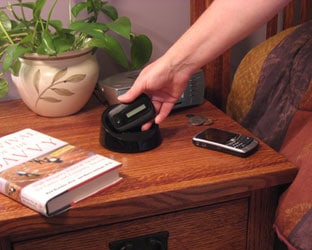Don’t think the COVID-19 impacted audience estimates are of value to a network radio group’s sales team?
You’re not alone.
The Network Radio Research Council (NRRC) on Tuesday (8/25) formally recommended that all network/national buying and selling be based on the Fall 2019 Nationwide survey.
That’s the latest data available prior to the COVID-19 pandemic.
And, the NRRC’s recommendation follows a statement from Nielsen indicating that future buying and planning decisions should not be made using COVID-19 impacted audience estimates. This includes the upcoming Spring 2020 Nationwide survey.
The impact of the COVID-19 pandemic has caused what the NRRC calls “an unprecedented divergence of traditional patterns of media consumption,” including AM/FM listening and the streaming of audio.
As has been reported by RBR+TVBR, listening behaviors were significantly altered starting in mid-March 2020, as the public adjusted to remote work environments and shelter-at-home mandates across the United States. The broadcast month of April represents the first month of Nielsen’s Spring 2020 [April-May-June] Nationwide survey. Each month subsequent to April has demonstrated consistent increases in listening, and there is confidence listenership will continue to stabilize and approach pre-COVID-19 levels.
That said, cume levels plummeted across the last week of March and in April, and in many markets have not fully recovered to levels seen in the last weeks of 2019.
Given the significant cume drops, putting a focus on Time Spent Listening with fewer “exposure” occurrences in a Portable People Meter (PPM) market, “it is, therefore, the NRRC’s position that the Fall 2019 Nationwide book represents the best solution for the upcoming 2021 network radio upfront and Q4 scatter buys.”
But, is that a flawed solution in some ways? In Miami, iHeartMedia switched the format of WMIA-FM 93.9 to an all-’90s presentation in early July 2020. As such, iHeart would be selling on data based on its previous gold-based AC presentation. Other format changes across the U.S. would also be impacted by the decision to sell based on outdated data.
Yet, the NRRC’s position, the group argues, follows the statement below from Nielsen, regarding all COVID-19 impacted data releases thus far:
Nielsen takes steps to ensure that the media measurement data we release meet our data quality standards. Audience estimates covering the time of the COVID-19 Public Health Emergency can and should be used to understand the nature of that audience during that period only since it may reflect behavior that is unique to the COVID-19 crisis. Users should be aware that the effect of COVID-19 on media consumption will vary by market, period and measurement type.
The NRRC concludes, “Given the anomalous nature of audience behavior during the COVID-19 Public Health Emergency, it is Nielsen’s position that future buying and planning decisions for periods that fall outside the COVID-19 crisis should not be made using COVID-19 impacted audience estimates.”
The Network Radio Research Council was created in 2001 to promote “valid, reliable, and effective” national radio audience measurement research. Its current member roster includes AdLarge Media, American Urban Radio Networks, Crystal Media Networks, Premiere Radio Networks, Sun Broadcast Group, United Stations Radio Networks, and Westwood One.
— With reporting by Renee Cassis, in New York





